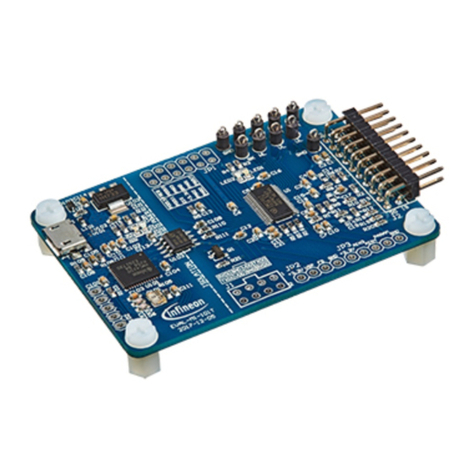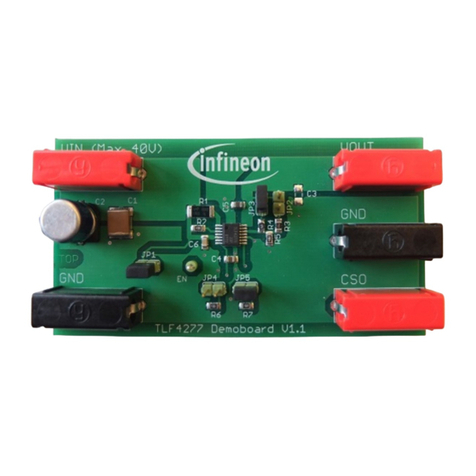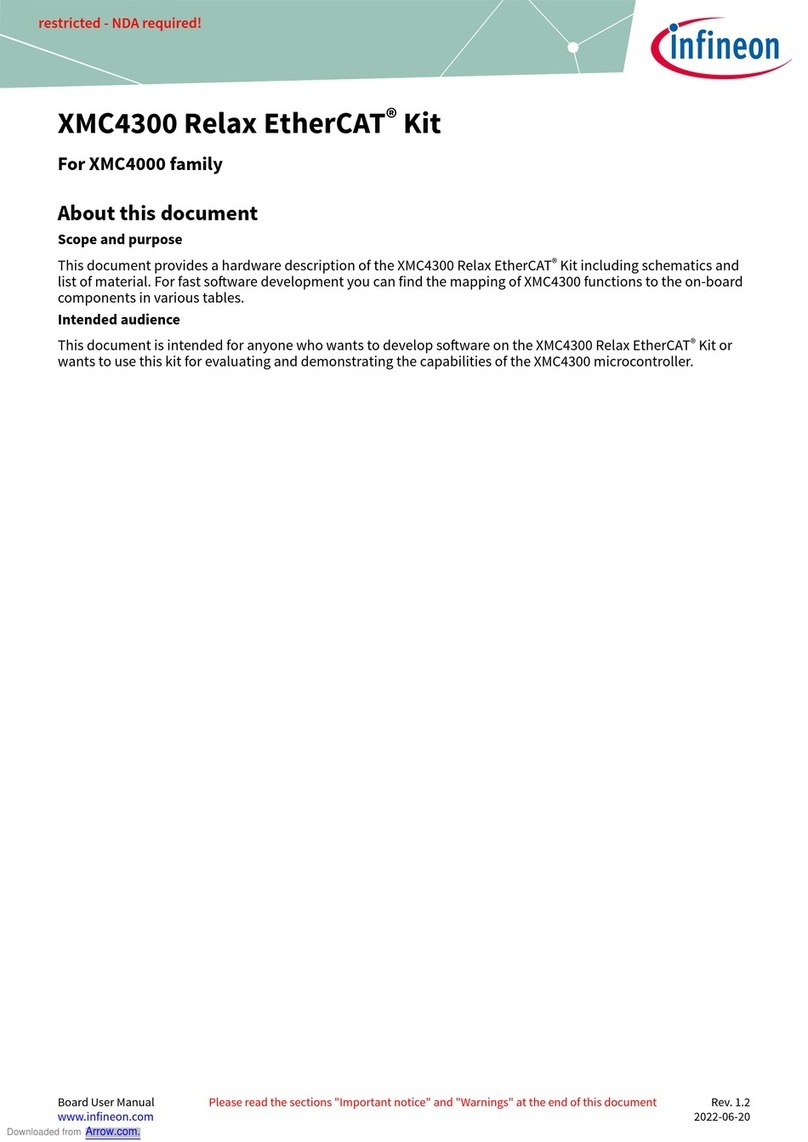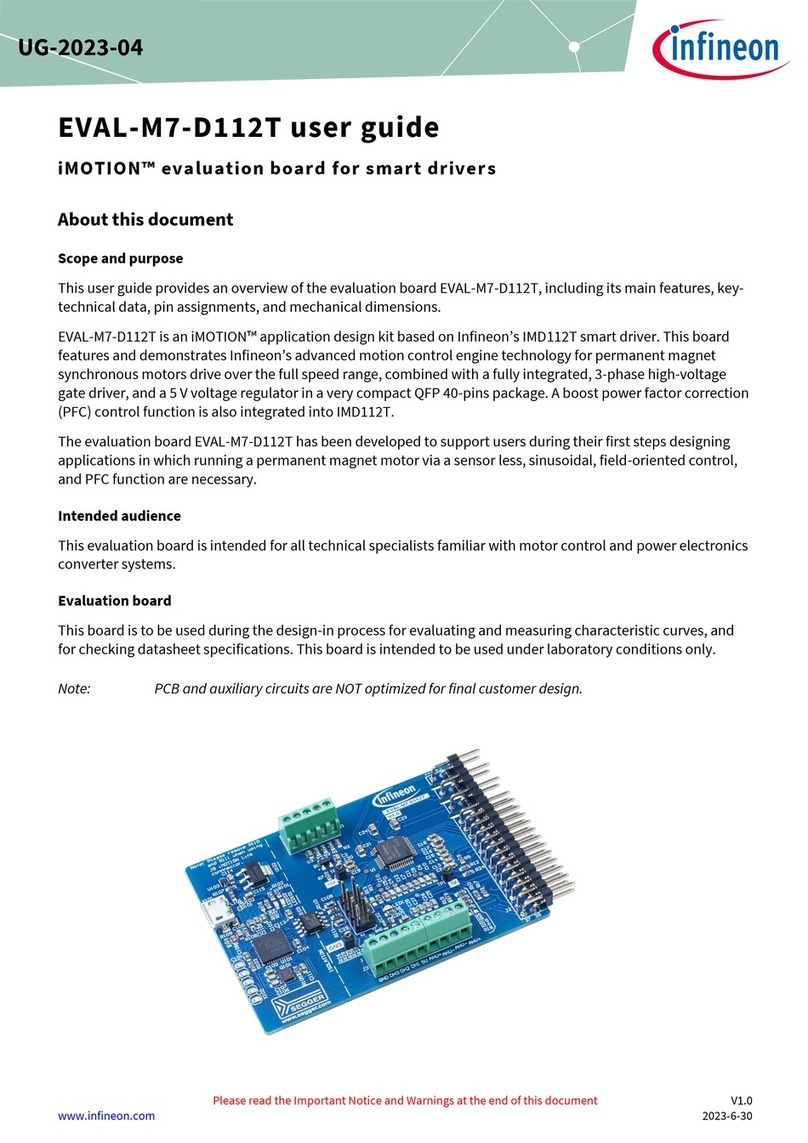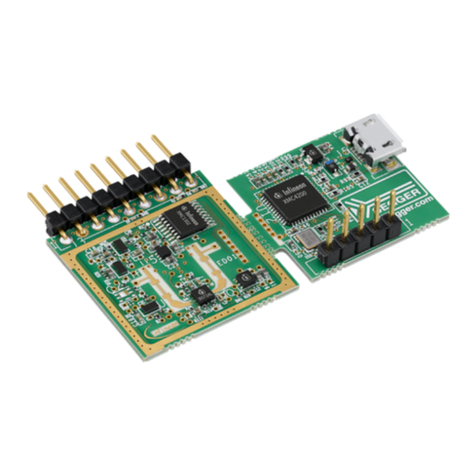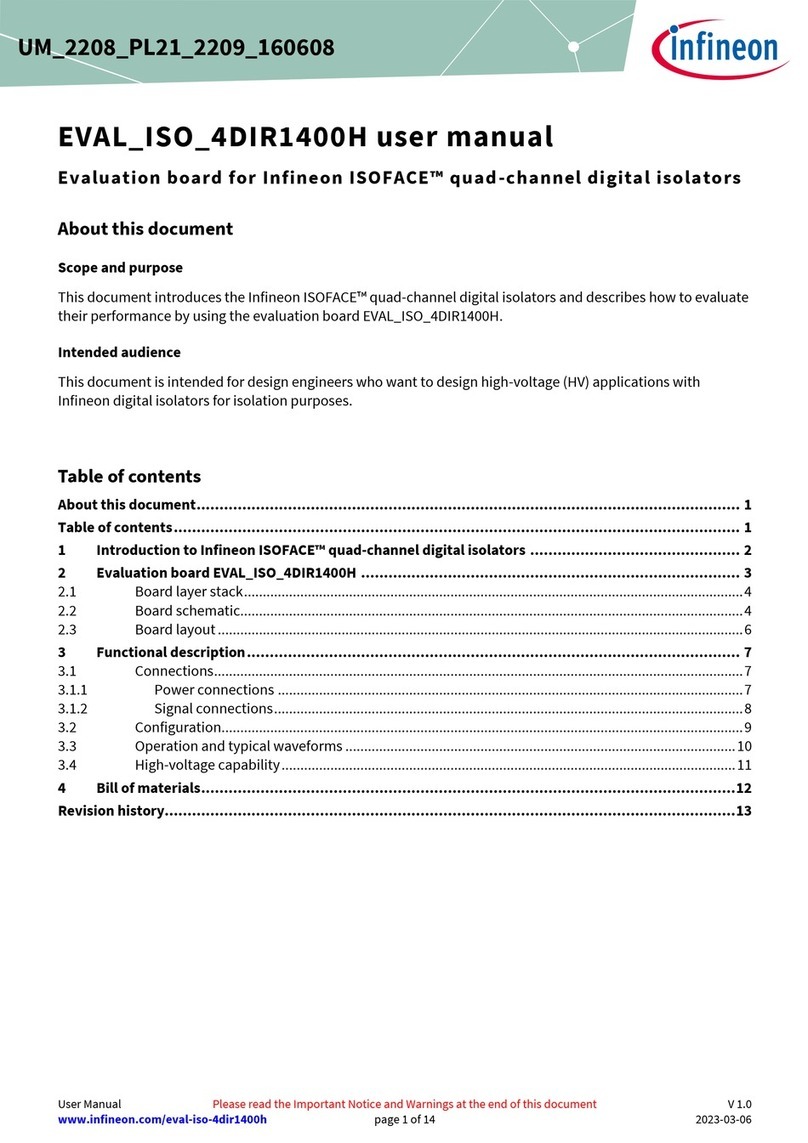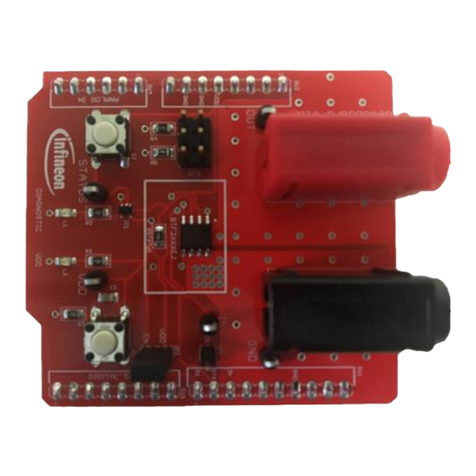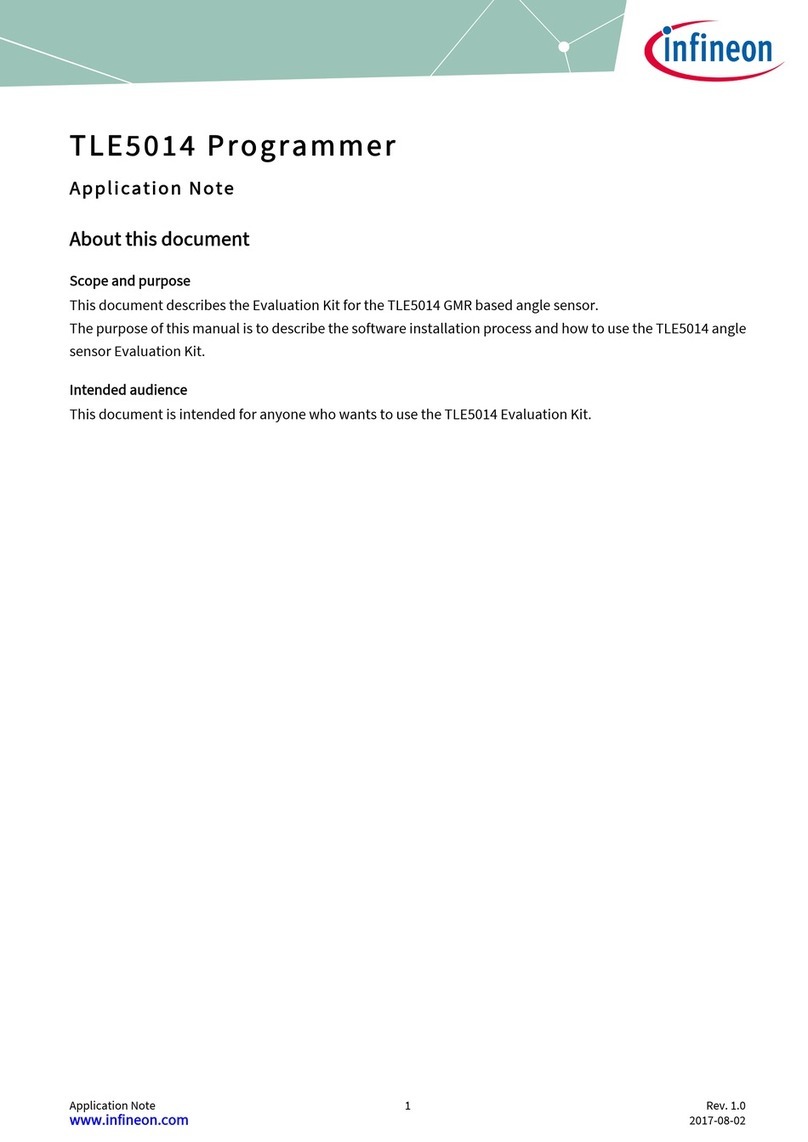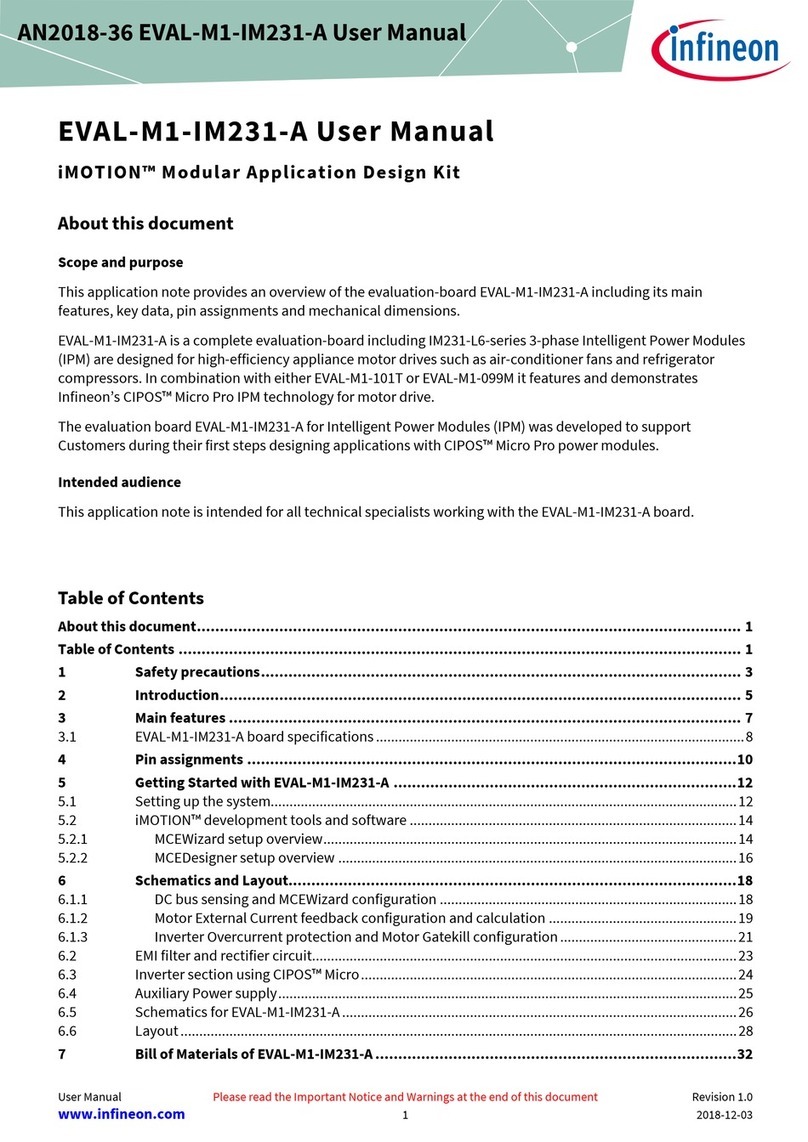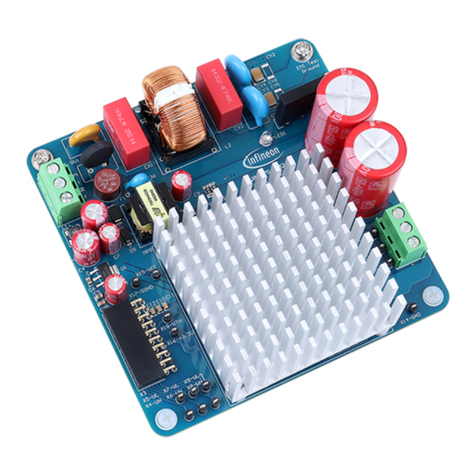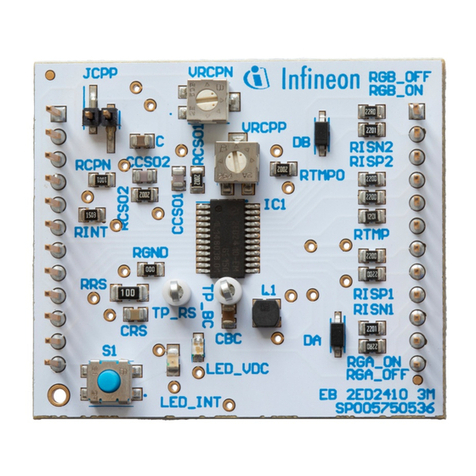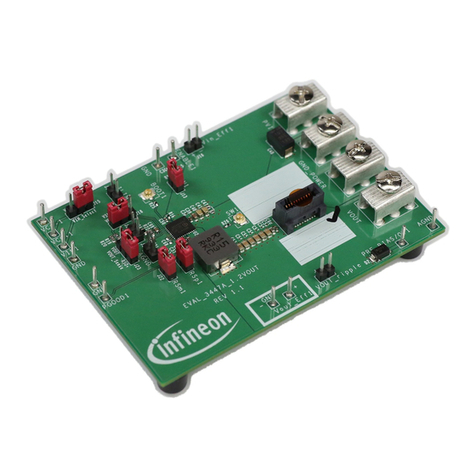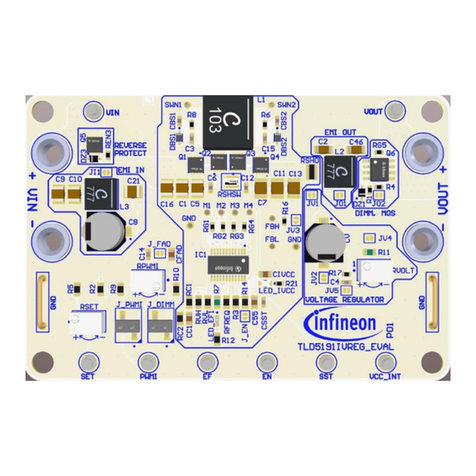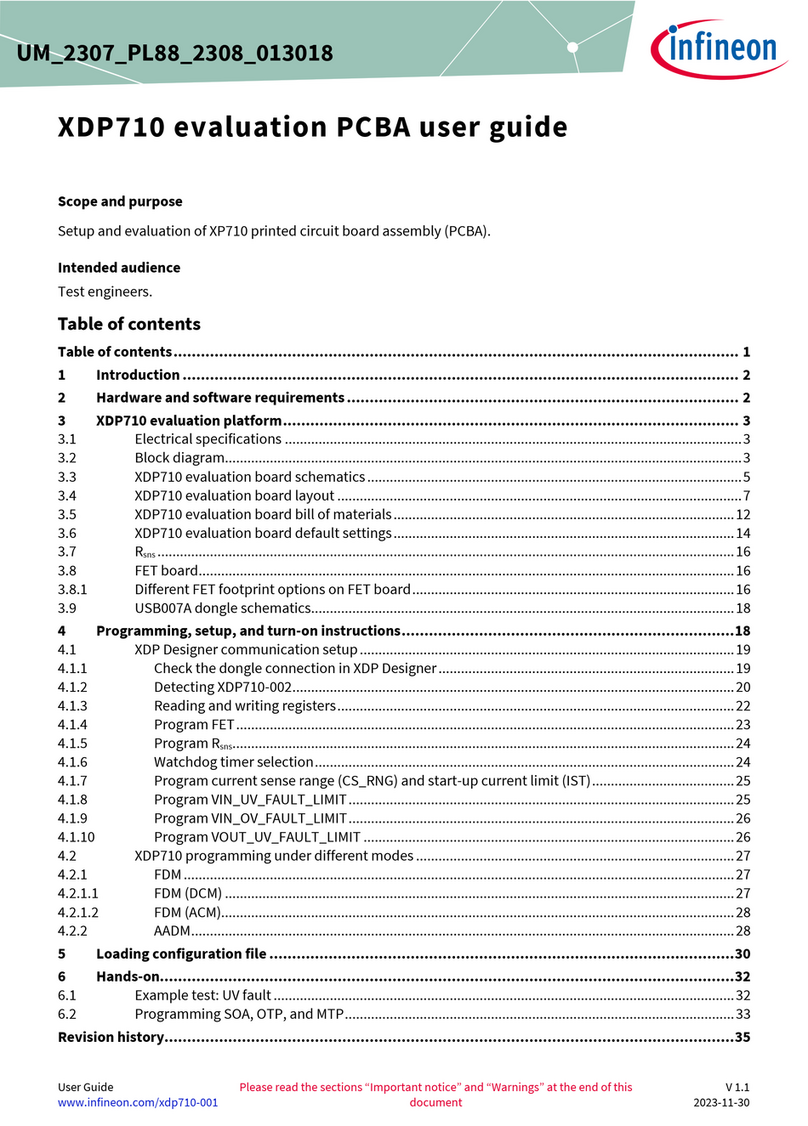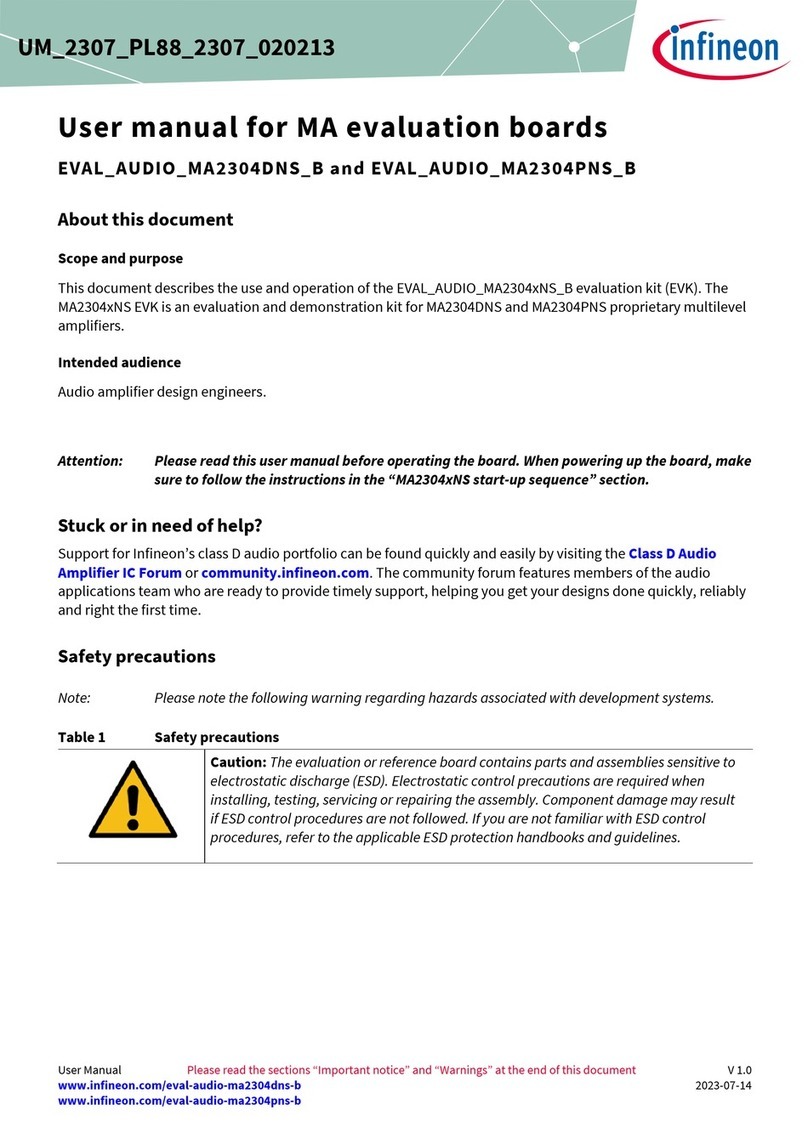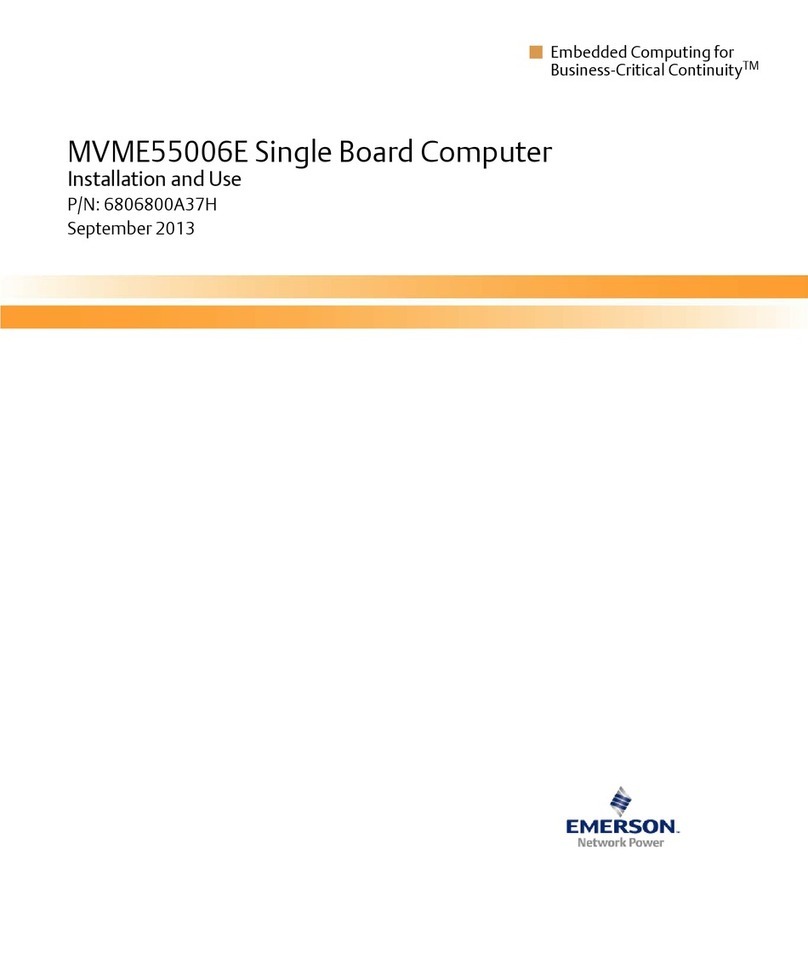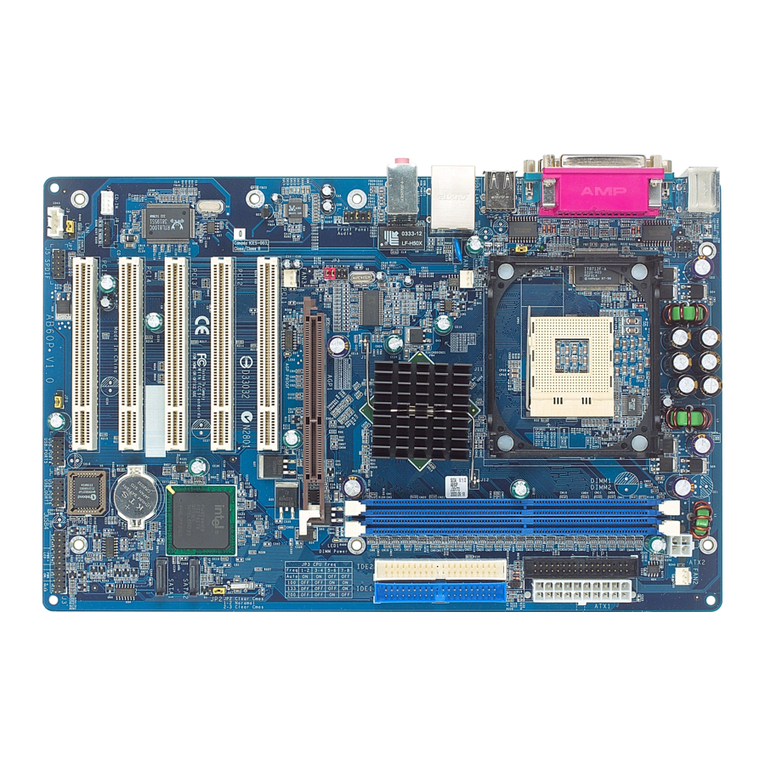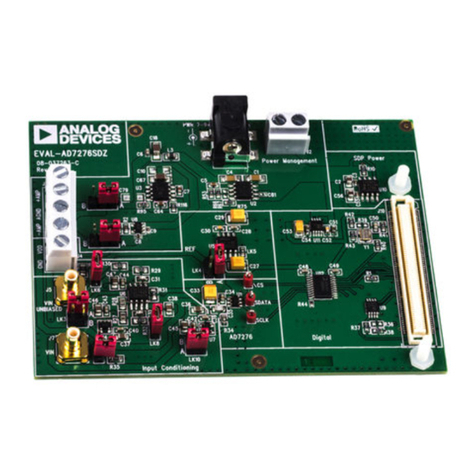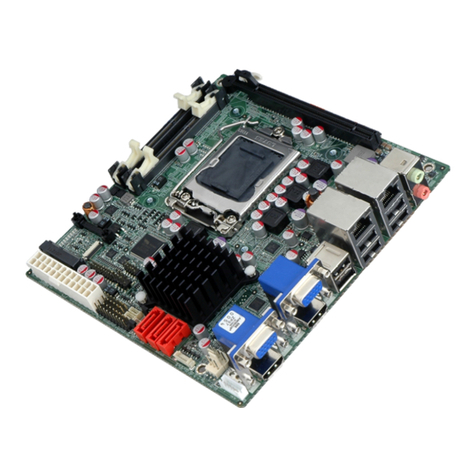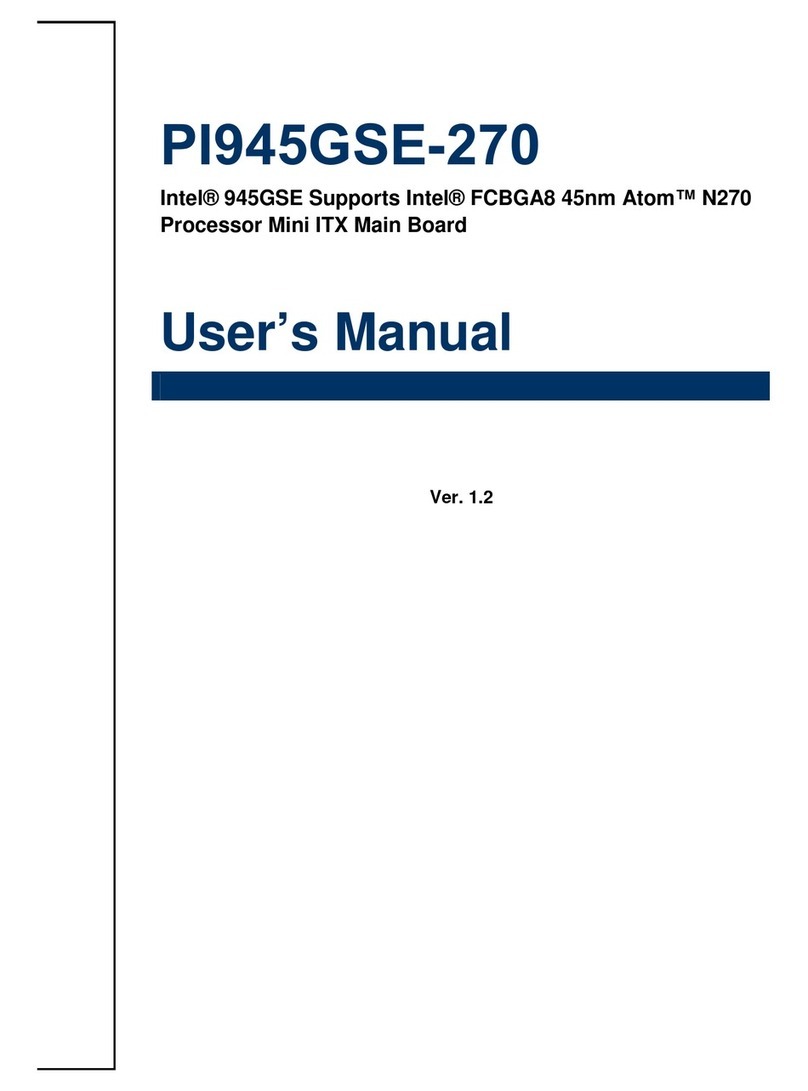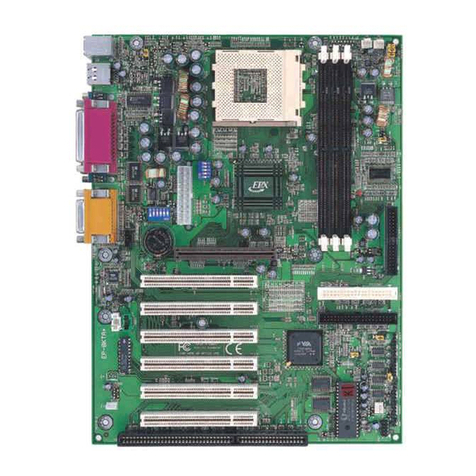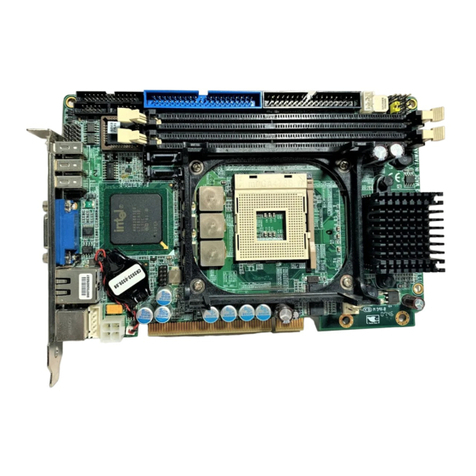
EVAL-IH-R5IPB-A-V1 Evaluation board
User Guide
Experimental results
theotherhand,whentheINNvoltagechangesfromlowtohigh,theIGBTisturnedoff,withatypicalpropagation
delay of 2.2 µs. The larger propagation delay at turn-off is due to an increased filtering time to avoid spurious
turn-off events. As a consequence, the turn-off of the current in normal operation occurs with a delay, with
respect to the INN transition, from low to high.During normal operation,the high value of the voltage atpin INN
istypicallyequalto2.5V.Suchavalue correspondsto‘normal’conditionoftheIEWS20R5135IPB.
5.1.3 Operation in current limitation
Depending on the chosen setting of the maximum current, a current limitation can already be reached during
normaloperationmode,especiallyathighpowerlevels. Whenthishappens,the100Hzenvelopeofthecollector
currentchangesasshowninFigure12a.Inthesingleswitchingevent,astrongcurrentlimitationcanbeidentified
if the IGBT current switches off before the INN voltage changes from low to high, as shown in Figure 12b.The
operationin current limitation is still considered a ‘normal’ condition for the IEWS20R5135IPB and therefore no
change in thevalue oftheoff-state INN voltage is produced in this case. Nevertheless,it is important to mention
that when current limitation occurs during the operation, the input current of the overall system changes its
shape according to the envelope shown in Figure 12a. As a consequence, the total harmonic distortion (THD) of
theinputcurrentincreases.For thisreason, thecurrentlimitation featuresshould bemainlyused for protection,
andthelimitationthreshold shouldbeset ina waythat thecurrent isnot limitedduring thenormal operation of
thesystem.
5.1.4 Operation in case of overtemperature warning and overtemperature
shutdown conditions
Incasethetemperatureofthedeviceexceeds75°C,thestatusoftheIEWS20R5135IPBchangesto
‘overtemperaturewarning’mode.Inthiscondition,thehighvalueoftheINNvoltagechangesfrom2.5Vtoa
typicalvalueof4V,asshownin Figure 13a. The MCUcontinuoslymonitors theaveragevalueoftheINNpinand
canthereforedetectthestatusandreactconsequently.Inparticular,in‘overtemperaturewarning’ mode:
•TheLEDOTWontheboardturnson.
•Thespeedofthefanisincreased.
Assoonasthetemperatureofthedevicedropsagainbelow75°C,theOTWLEDswitchesoff,andthespeedofthe
fanisagainreduced.Incaseofsignificantpowerdissipation(e.g.strong hardswitchingturn-on at lower power),
thetemperatureoftheIGBTcanincreaseevenmore,andeventuallyreachthevalueof150°C.Whenthishappens,
theIEWS20R5135IPBenters‘overtemperatureshutdown’mode.Inthiscondition,thedevicestopsoperatingand
keeps the INN voltage constantly at a value that is <0.5 V, as shown in Figure 13b. In this condition, the led OTS
(red) is turned on.The ‘overtemperature shutdown’mode ceases as soon as the temperature ofthe IGBT drops
below 75°C; the OTS LED switches off, and the system restarts automatically, performing the vessel detection.
Thefanspeedis alsoreduced whenthedevice restarts in ‘normal’status. Thecircuitfor detectingthe INNstatus
isshowninFigure13cwhilstitsoperationisexplainedasfollows:
•TheINNsignal is split and fed into a peak-detectorcircuitconsistedofthe SchottkydiodeD3andthe
capacitorC10.ThevoltageacrossthecapacitanceissensedbyanA/DconverteroftheMCU.Bymeansof
thiscircuit,theIEWS20R5135IPBstatusreadcanbeperformedin a relaxed time without the need to be
synchronizedwithPWMdrivingsignal.
•WhentheIEWS20R5135IPBenters overtemperaturewarning mode, the INNvoltageincreases to 4 V during
theoff-state;thecapacitanceisthereforecharged upto3.8V(consideringthevoltagedropacrossD3)
duringroughly100nsbecausethe chargingcurrentismainlylimitedbythemaximum output currentofthe
INNpin.ResistorR22isinsteadusedforallowingthedischargeofthecapacitanceC10whenthe
IEWS20R5135IPBisinshutdownmode,sinceitcan’tbedischargedbytheINNcurrentbecause of the diode
D3.
ApplicationNote 17of 34 V1.1
2019-11-25




















